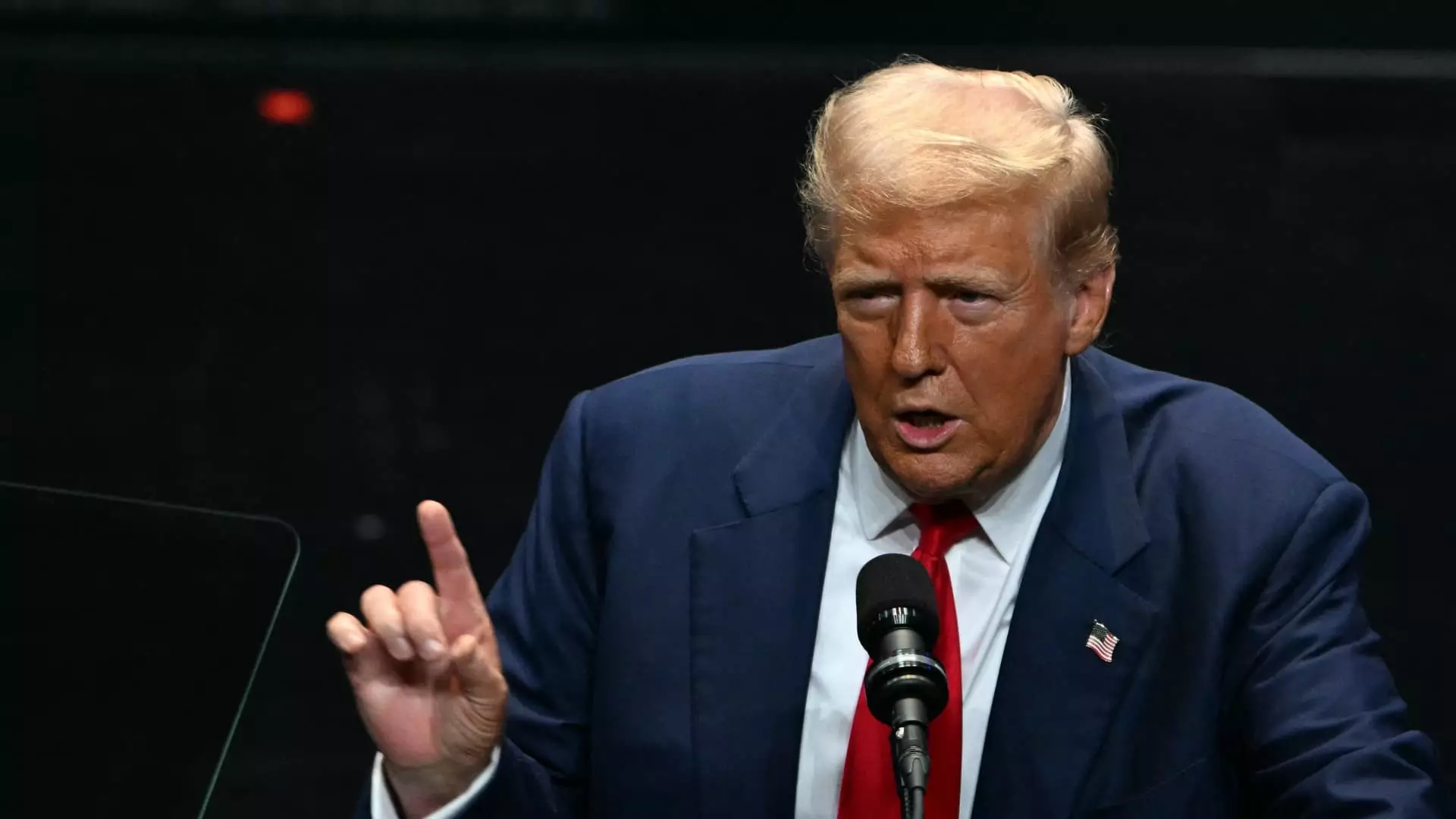In a significant rally held in Savannah, Georgia, former President Donald Trump took the stage to present a suite of new manufacturing proposals aimed at re-establishing his economic platform for the upcoming presidential election. As Vice President Kamala Harris prepares to unveil her own economic initiatives, the contrast between their approaches highlights the divergent strategies both candidates are poised to embrace.
At the forefront of Trump’s plan is his proposal to augment tax incentives for manufacturers operating within the United States. He articulated a vision of expanded research and development (R&D) tax credits that would permit companies to immediately write off the full cost of heavy machinery and equipment in the first year of acquisition. This bold move signals a departure from a key element of the Tax Cuts and Jobs Act (TCJA) instituted during his previous administration, which mandated a five-year amortization schedule for R&D expenses rather than allowing for an immediate deduction.
By advocating for full expensing in the initial year, Trump not only seeks to alleviate the financial burden on manufacturers but also aims to boost competitiveness in a global market increasingly dominated by players willing to invest heavily in technology and infrastructure. It suggests a recalibration from a previously adopted tax structure that may have inadvertently stifled innovation among smaller firms.
In addition to tax incentives, Trump proposed the creation of a dedicated “manufacturing ambassador.” This unique role is envisioned to promote American manufacturing by actively engaging with businesses overseas, enticing them to relocate their operations back to the United States. By framing this initiative within his larger economic narrative, Trump demonstrates a commitment to re-establishing the U.S. as a manufacturing powerhouse.
This concept of a manufacturing ambassador reflects a more personalized approach to economic policy, contrasting with traditional bureaucratic methods. It indicates Trump’s strategy to appeal not only to voters but also to industry leaders who may have felt overlooked during previous administrations. However, it remains to be seen how effective this role could prove in the hyper-competitive landscape of global business.
Trade has consistently been a cornerstone of Trump’s political identity, and his remarks at the rally reinforced this. He emphasized a hardline approach, including the potential for imposing hefty tariffs—ranging from 100% to 200%—on automobiles imported from Mexico. Such a stance is aligned with his historical viewpoint that prioritizes American jobs over international trade agreements, a perspective that resonates with a substantial segment of the electorate troubled by offshoring and job losses.
However, this strategy raises questions about its broader economic impact, particularly how such tariffs might affect consumer prices and relationships with trading partners. The potential for retaliatory measures could also lead to an escalation of tensions with other nations, creating a precarious balance in international trade.
As Trump seeks to solidify his economic narrative, Vice President Kamala Harris’s team is not standing still. In a countersession, Harris’s campaign sought to undermine Trump’s proposals by highlighting perceived flaws in his approach to the economy. With remarks from influential figures like billionaire investor Mark Cuban, there’s a concerted effort to position Harris as a more thoughtful and stable choice for economic leadership, one who considers the long-term implications of policy.
Cuban emphasized that Harris’s corporate tax proposals might exert less pressure on businesses than Trump’s tariff-heavy policies, creating an environment conducive to economic growth. Additionally, Cuban’s reassurances regarding Harris’s approach to cryptocurrency regulation mark an attempt to bridge the gap between traditional economic concerns and the burgeoning tech sector—a blend of advocacy that could appeal to a generation of voters prioritizing innovation.
As Trump and Harris prepare to battle for public support in the lead-up to the election, it is clear that economic policy will play a pivotal role in shaping voter sentiment. Both candidates are employing contrasting strategies—Trump advocating for a direct and aggressive economic revamp, while Harris seeks to provide a stabilizing counter-narrative that resonated with corporate leaders and progressive voters alike.
The stage is set for an intense campaign season, with each candidate leveraging their respective platforms to boldly claim the mantle of economic stewardship in a post-pandemic America. The outcome will likely hinge on the voters’ perception of who can best guide the nation through the multifaceted challenges of modern economic policy.


Leave a Reply